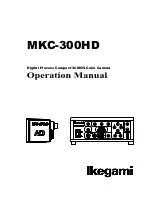
32
XCG-CP510/XPL-SDKW
2020
XCL
XCG
Digital V
ideo Camera (GS
CMOS)
Digital V
ideo Camera (CCD)
Accessories
XCL
XCU
Color Camera Block
FCB-4K
FCB-HD
Polarization
Camera
(A) When 1 pattern of exposure time is set
Set the number of exposures, exposure interval (1), and exposure
time (2) Continuous shooting at the trigger timing
(B) When 2 patterns of exposure times are set
Set the number of exposures, exposure interval (1), and exposure
time (2) Continuous shooting at the trigger timing
a
b
a
b
Trigger signal
Exposure
Trigger signal
Exposure
Trigger signal
Exposure
Memory channel
2 settings
Memory channel
1 settings
Burst Trigger
This is a feature capable of continuous shooting at the trigger
timing and specifying the number of exposures, exposure interval,
and exposure time. Select from the mode that repeats one
exposure time or the mode that switches between 2 exposure
times repeatedly. Furthermore, there is another mode that repeats
only while the trigger signal is on.
Trigger signal
Exposure
Memory channel
1 settings
Memory channel
2 settings
1
2
Trigger signal
Exposure
Camera output
2
-1
2
-2
1
Trigger signal
Exposure
Camera output
Trigger Modes
There are five modes, Free run, Bulk Trigger, Sequential Trigger,
Burst Trigger and Freeset squence.
Free Run
The camera operates without a trigger signal and performs the
video output operation continuously after the shutter (exposure) is
finished when operating in Free run mode.
• Trigger width detection (Polarity: positive)
Bulk Trigger
Different camera setting configurations are stored in memory
channels beforehand, with the different settings applied to acquire
multiple video images at each trigger event. In the following
diagram, two images are acquired in one cycle.
Sequential Trigger
Different camera setting configurations are stored in memory
channels beforehand, with the different settings applied in
sequence to acquire a different image with each trigger event. In
the following diagram, two images with different exposure settings
are acquired in one cycle.
• Trigger edge detection (Polarity: positive)
Trigger
signal
Trigger Delay
Sensor
output
Exposure
Trigger
disabled
Trigger
signal
Trigger
inhibition
Exposure
Sensor
output
Trigger signal
Sensor output
Exposure
80 μs
150 μs
100 μs
Freeset sequence
You can perform multiple (maximum 10 patterns) exposure and
GPO output with 1 trigger signal.
The start time and length as well as the gain of exposure and GPO
output can be set to any value.
The set sequence of exposure and GPO output is established as 1
cycle, and this cycle can be repeated.
3
2
3
7
8
7
6
5
6
5
0
0
Line2 output
1
2
Trigger signal
Exposure
Camera output
Trigger input can be disabled. This function is effective when
disabling the trigger signal to a specific camera in the environment
where multiple cameras are connected by the same trigger
signal and when preventing false operations caused by noise
contamination to the trigger signal line (due to the installed
environment).
Trigger Inhibition
The camera can delay the trigger signal.
Trigger Delay
Only signals in the set trigger width can be accepted as the trigger
signal. This functions as a noise filter, which removes chattering or
disturbance noise in the trigger signal line. When the trigger signal
is input, exposure is started with the time lag of the trigger range
setting values. Image will not be output, when trigger signal width is
out of set range.
Trigger range operation example
ExposureTime=300, TriggerAcceptanceRangeLowerLimit=100 in
the figure.
Trigger Range Limit


























